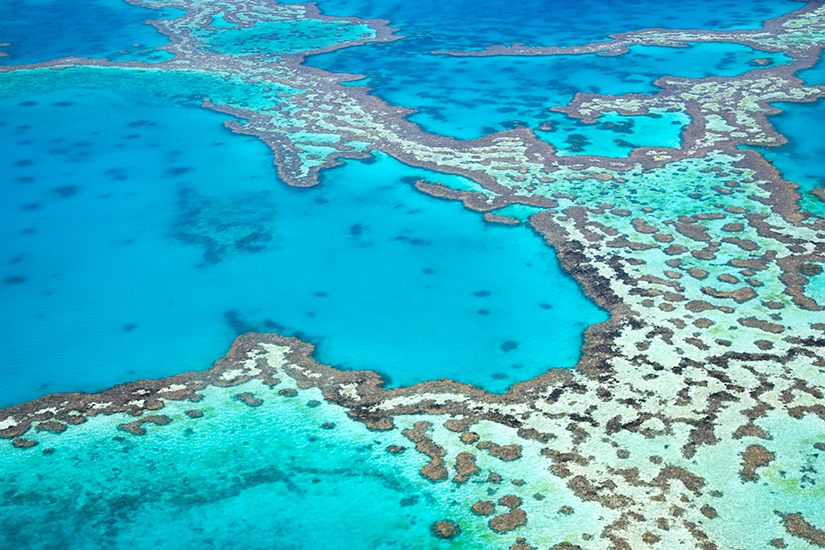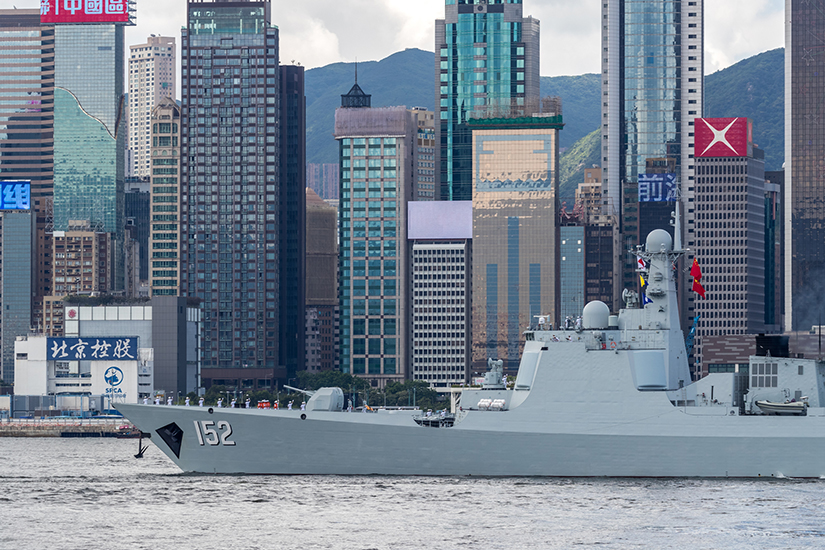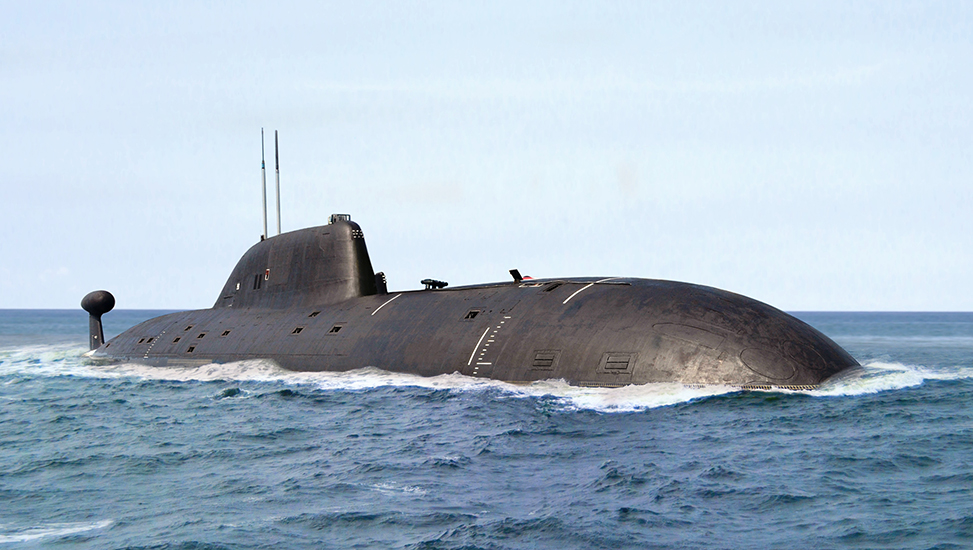The Chinese navy arrives on Australia’s doorstep
Security challenges in the maritime domain are attracting increasing attention as strategic competition accelerates across the Indo-Pacific region. For Australia, this was brought into stark relief by the arrival of People’s Liberation Army Navy (PLAN) warships in the Tasman Sea (separating Australia and New Zealand), where they proceeded to conduct an unannounced live-fire exercise on 21 February.[1] Though such exercises are technically legal, they were viewed as “irresponsible” in Canberra since they occurred in a busy air corridor between the two countries and construed as part of a pattern of unsafe and unprofessional conduct by the Chinese armed forces.[2] The Albanese government was then assailed by questions as to why the naval flotilla had not been efficiently detected and tracked by Defence as it subsequently proceed on a course to (partly) circumnavigate the Australian continent.[3]
Though PLAN warships have operated close to Australian waters on previous occasions, this could be perceived as “upping-the-ante”, and perhaps a signal to refrain from maritime operations in Chinese areas of interest such as the South China Sea. It demonstrated two things to Canberra: that China has the intent and capability to operate in distant seas proximate to Australia, and that the Australian defence establishment fell short in terms of its Maritime Domain Awareness (MDA). It is therefore timely to focus on Australia’s role as a maritime security actor, examining the challenges it faces, and the responses underway, with a view to indicating areas of joint concern and potential cooperation with allies and partners in the conclusions.

Australia as a maritime security actor
Australia’s 2024 National Defence Strategy defines the country as ‘a middle-power maritime nation’.[4] As an island continent straddling the Indian, Pacific, and Southern Oceans, with a coastline of about 60,000 km (including islands), it encompasses the world’s third largest Exclusive Economic Zone (EEZ) (c. 8.5 million km²). Australia also claims sovereignty over 42% of Antarctica (c. 5.9 million km²). As the national anthem proclaims, the country is indeed “girt by sea” and, like Japan, dependent on commercial shipping routes for its trade, prosperity and survival.
With the advent of the “Indo-Pacific” maritime concept and the intensification of strategic competition in the region, Australia is taking its oceanic destiny seriously.[5] In addition to the 2023 Defense Strategic Review and 2024 National Defence Strategy, which contain strong emphasis on maritime security issues, a spread of earlier documents released by the Royal Australian Navy (RAN) provide solid indications of the challenges the nation confronts and its planned responses to these. These far less well-known documents - the 2021 Maritime Domain Strategy (Plan Mercator) and 2022 Navy Strategy (Plan Pelorus) - provide many insights into Australia’s approach to military-strategic issues in the maritime domain. Whilst the Australian Government Civil Maritime Security Strategy (2022), which emanated from the Department of Home Affairs (DHA), addresses “non-military” (or “non-traditional”) security issues to complete the picture. Together these add up to a well-defined, focused, and coherent maritime-orientated strategic outlook.
Plan Pelorus declares that:
‘The maritime domain is central to the security and prosperity of our Nation. As resources become increasingly scarce, and the competition greater, all elements of national power must work together to achieve the desired outcomes for our Nation, and those of our friends.’[6]
“Maritime security” is an important but extremely expansive and complex concept.[7] To keep the following analysis succinct, I divide the following analysis into the “military” (mainly naval) dimension of maritime security on one hand, and the “non-military” (or “non-traditional security”) aspects of maritime security on the other.
1. Military challenges to Australian maritime security
The most significant strategic challenge in the maritime domain is the rise of Chinese sea power centred on the phenomenal expansion of the PLAN and Chinese Coast Guard (CCG). Thomas Shugart argues that ‘China is now, by far, the world’s dominant maritime power by every measure other than sheer naval tonnage’.[8] This matters to Australia for two reasons. First, the PLAN contests the ability of the US Navy to deter or respond to regional crises in the Taiwan Strait, South and East China Seas, as well as defend its treaty allies in the region. As a traditionally staunch ally of America, there are deep expectations that Australian forces would support their US brethren in time of naval conflict. In peacetime, the naval balance of power is also integral to upholding the Free and Open Indo-Pacific (FOIP) vision and rules-based order. Second, while the prospect of a direct military attack upon Australian territory by the PLAN appears remote, the recent demonstration in February indicated it could be feasible. As part of any rational strategy for national defence, Australia must plan to protect its sovereign territory from external aggression or blockade.

The 2024 National Defence Strategy states that Canberra’s overall strategic approach is ‘Shape our strategic environment; Deter actions against our interests; and if required, Respond with credible military force’.[9] But Australia must reconcile broader regional support for the US and its Strategic Partners (such as Japan), with the imperatives of more narrowly defined sovereign territorial defense. Plan Mercator points to the interlinked nature of these objectives, indicating the solution lies in ‘increased self-reliance within our alliance framework.’[10] While “allied” plans with the US and other partners (such as Japan) in the event of a regional contingency remain a closely-guarded secret, the National Defence concept governs the deterrence through “denial” strategy that seeks to prevent or attrit hostile forces on their southward seaborne approach toward Australian territory. According to the National Defence Strategy, Australia’s ‘primary area of military interest, [is] the immediate region encompassing the Northeast Indian Ocean through maritime Southeast Asia into the Pacific. This region includes our northern approaches.’[11] Australian defence strategy relies on the “stopping power of water” to encounter and degrade a hostile force far to the north of its territory.[12]
To better fulfil both these roles, Australia has embarked upon an unprecedented expansion of its surface and sub-surface naval capabilities. In the first instance, the 2024 Enhanced Lethality Surface Combatant Review prioritises the acquisition of 6 Hunter-class Frigates, 11 new general-purpose Frigates (such as Japan’s Mogami-class) six new Large Optionally Crewed Surface Vessels, the upgrading of Hobart-Class Destroyers, and provision of 25 smaller vessels for the Australian Border Force.[13] It plans to arm the existing and projected assets with Tomahawk and Naval Strike missiles and the Standard Missile-6 long-range air defence missile.[14] Another key area that requires attention is the recapitalisation of a sovereign merchant navy, as outlined in the 2023 Strategic Fleet Report.[15]
In terms of sub-surface capability, the acquisition of nuclear-powered Submarines (SSNs) under Pillar I of the AUKUS trilateral partnership, accompanied by the advanced technologies Pillar II (uncrewed undersea vehicles, hypersonics, electronic warfare etc.) will have a huge impact on Australian maritime power.[16] One should not forget the naval infrastructure and industrial development programs outlined under the “Optimal Pathway”, including basing access for American-British-Australian SSNs on both coasts of the country.[17] Naturally, sea-based assets will be complemented by the ground, air, electromagnetic, space and cyber domains, as part of “multi-domain warfare”. Working together across these domains, improved MDA is essential to conducting Australian defence strategy.

2. Non-military challenges to Australian maritime security
While contributing to the allied naval balance of power and preparing an active defence of Australian territory are essential elements of maritime strategy, broader support for sea governance and the rules-based order also includes “non-military” dimensions. In contrast to Mercator and Pelorus, the Australian Government Civil Maritime Security Strategy focuses primarily on the range of non-military risks that Australia faces in the maritime domain, which largely fall under the remit of the Maritime Border Command and Australian Border Force. It notes that ‘Australia’s civil maritime security considerations are vast’, encompassing:
‘people smuggling, terrorism, transnational serious and organised crime, domain awareness, capacity building, international engagement, foreign interference, natural resources and the marine environment, critical infrastructure, cyber security, supply chains, biosecurity, and sustainability.’[18]
From this expansive list, I will concentrate here on four of the most salient: grey zone threats (not mentioned above), critical infrastructure, regional capacity-building, and countering foreign influence; all of which are interlinked.
- Grey zone threats (or “hybrid warfare”) in the maritime domain have been highlighted as a major concern for Australia, and for the regional as a whole. And, by their very nature, they intersect with the strategic challenges presented above. For example, the Australian National Defence Strategy highlights ‘destabilising, provocative or unsafe actions by the People’s Liberation Army, China Coast Guard and maritime militia.’[19] Australian naval vessels or aircraft patrolling in the South China Sea, Yellow Sea and Sea of Japan have been subjected to “unsafe” intercepts or other harassment in the course of their duties, each time sparking a diplomatic clash with Beijing.[20] For Australia, this involves questions of championing international law and norms in the maritime domain (such as respect for UNCLOS and the 2016 Philippines-China Permanent Court of Arbitration ruling on the South China Sea), as well as good practice in maritime/airborne encounters at sea.
- Critical infrastructure is also a key concern for Australia. As a result of high-profile incidents in the Baltic Sea and around Taiwan where undersea communication cables were severed under suspicious circumstances, “seabed-security” has gained prominence. With 99% of international data transfer cables running across the sea bed, Australia would also be highly vulnerable to such a coup de main. The South China Morning Post newspaper recently trumpeted China’s technological ability to cut armoured undersea cables, inadvertently drawing attention to the risk.[21] To combat this, Cynthia Mehboob argues ‘Canberra and its regional partners should focus on enhancing genuine resilience: developing cable redundancy, investing in rapid repair capabilities, and bolstering international coordination.’[22] This is already happening through the Quad and other formats such as the Australia-US-Japan Trilateral Infrastructure Partnership with Palau.
- Capacity-building is a major effort to enhance regional maritime security, whilst concomitantly shoring-up Australia’s northern defence line (indicated above). Through such processes, the Department of Foreign Affairs and Trade (DFAT) seeks to ‘empower our neighbours to ensure the Pacific region can meet its own security needs.’[23] The Pacific Maritime Security Program (PMSP) is a key part of Australia’s regional capacity-building efforts, assisting Pacific Island Countries (PICs) with MDA, training and material support to protect their maritime sovereignty across their EEZs.[24] This forms part of a broader “Pacific Step-Up” policy that features Official Development Assistance (ODA), infrastructure and economic development and policing/governance issues.
- These initiatives within the context of maritime security are part of an effort to counter increasing Chinese geopolitical influence in the vital South Pacific sub-region.[25] A security agreement between the Solomons Islands in 2022 and Beijing, and a series of Chinese deals with the Cook Islands this year, has discomforted Canberra (and Wellington).[26] As Foreign Minister Wong identified, Australia is in a “permanent contest with China” in the South Pacific.[27] Australia has ramped-up its security engagement particularly with Papua New Guinea (PNG); a country vital to Australian security. It is refurbishing Lombrum naval base on Manus Island for joint usage, and discussions are underway upgrading the existing Bilateral Security Agreement with PNG to something approximating an “alliance” are underway, to secure Australia’s forward naval foothold.[28] This mirrors Canberra’s efforts in maritime South East Asia, with Indonesia as the lynchpin (Australia is already closely tied to Singapore, and to an extent with Malaysia, including through the Five Power Defence Agreement). The 2017 Joint Declaration on Maritime Security Cooperation outlined the full panoply of non-traditional challenges related to maritime security as areas for collaboration between Canberra and Jakarta, and in 2024 a bilateral Defence Cooperation Agreement was signed.[29]
Conclusions
This Analysis has revealed the essential contours of Australia’s strategic approach towards security in the maritime domain, as part of its extensive contribution to regional security. Canberra has ambitious plans for an unprecedented naval expansion through the Surface Combatant Review and AUKUS, but these will take a long time to mature. In the meantime, the defence establishment must act quickly to fill capability gaps, both through rapid acquisition of cheaper, easier to procure (stop-gap) capabilities, particularly missiles, drones and uncrewed sea/aerial vehicles, as well as undertaking a life-of-type extension program for its existing Collins-class submarine flotilla.[30] Yet Jennifer Parker highlights the challenges and opportunities that need to be addressed in adequately resourcing of Australia’s maritime strategy going forward, building on the earlier documents considered in this Analysis.[31]
In addressing both the military and non-military dimensions of maritime security in a turbulent Indo-pacific region, in addition to multilateral regional forums, Plan Mercator identifies that ‘Alliances and partnerships will remain a key strategic advantage’ arguing that ‘They must be nurtured and strengthened.’[32] Beyond the PICs and South East Asia mentioned above, partnerships with Tokyo and the London stand out for their potential to contribute to Australian and regional security. Japan appears to be the front contender to supply Australia’s demand for a general-purpose frigate from the Surface Combatant Review, through its Mogami-class vessel, and many further areas of maritime cooperation have been telegraphed at last year’s Foreign and Defence Ministers “2+2” Meeting.[33] Meanwhile, the UK plans to deploy another Carrier Strike Group to the Indo-Pacific in 2025, which will make a port visit in Darwin to conduct combined exercises including the RAN.[34] Working with Strategic Partners will be crucial to Australia’s ability to attain its maritime security objectives, especially as doubts arise as to American commitments under the second Trump Administration.
(2025/05/08)
Notes
- 1 Thomas Shugart, ‘Awful but lawful: China’s Australia flotilla’, The Interpreter, Lowy Institute, 25 March 2025.
- 2 Andrew Tillett, ‘Gaps emerge in coast surveillance as PM cops flak over Chinese drills’, Australian Financial Review, 26 February 2025; see footnote 20.
- 3 Andrew Tillett, ‘China drill was exposed by luck, not design. But has Albanese lied?’ Australian Financial Review, 27 February 2025.
- 4 Dept of Defense, National Defense Strategy, Commonwealth of Australia, 2024, p. 12
- 5 Thomas Wilkins, ‘Does Australia have an “Indo Pacific strategy”? ‘JIIA Policy Brief, Japan Institute for International Affairs, 29 July 2019.
- 6 Royal Australian Navy, Plan PELORUS: Navy Strategy 2022, Commonwealth of Australia, 2022, no page.
- 7 Christian Buerger and Timothy Edmunds. Understanding maritime security. Oxford University Press, 2024.
- 8 Thomas Shugart, ‘Awful but lawful’.
- 9 Dept of Defense, National Defense Strategy, p. 22.
- 10 Royal Australian Navy, MERCATOR: Maritime Domain Strategy 2040, Commonwealth of Australia, 2021, p. 8.
- 11 Dept of Defense, National Defense Strategy, p. 21.
- 12 John J. Mearsheimer, The tragedy of great power politics (Updated edition). WW Norton & Company, 2003, p. 33.
- 13 Australian Government, ‘ENHANCED LETHALITY SURFACE COMBATANT FLEET’, Commonwealth of Australia, 2024.
- 14 Ibid; ‘Defence announces SM-6, SM-2IIIC Order’, Australian Defence, 22 October 2024.
- 15 Department of Infrastructure, Transport, Regional Development, Communications and the Arts, ‘STRATEGIC FLEET TASKFORCE’, Commonwealth of Australia, 2023.
- 16 Australian Government, ‘Optimal Pathway’, Australian Submarine Agency, 2 October 2024.
- 17 Ibid; Dept of Defence, ‘Australia to build additional submarine base’, Joint Media Release, 7 March 2022.
- 18 Australian Government, Australian Government Civil Maritime Security Strategy, Commonwealth of Australia, 2021, p. 2.
- 19 Dept of Defense, National Defense Strategy, p. 49.
- 20 Thomas Wilkins, ‘By accident or design—or designed accident? China’s unsafe air intercepts’, The Strategist, Australian Strategic Policy Institute, 1 July 2022.
- 21 Stephen Chen, ‘China unveils a powerful deep-sea cable cutter that could reset the world order’, South China Morning Post, 22 March 2025.
- 22 Cynthia Mehboob, ‘Cutting through the narrative: What China’s deep-sea cable-cutter really signals’, The Interpreter, Lowy Institute, 26 March 2025.
- 23 DFAT, Australia in the World: 2025 Snapshot, Commonwealth of Australia, 2025, p. 4.
- 24 Dept of Defence, Pacific Maritime Security Program, Commonwealth of Australia, no date.
- 25 Thomas Wilkins, ‘ The “Great Game” in The South Pacific’, EAI Background Brief, No. 1678, East Asia Institute, Singapore, 01 December 2022.
- 26 ABC News, ‘China and Solomon Islands sign security pact, Beijing says it is 'not directed at any third party' amid Pacific influence fears’, 19 April 2022; Katy Watson, ‘Cook Islands China deal riles allies as West's grip loosens’, BBC, 28 February 2025.
- 27 David Spears, ‘Australia in a "state of permanent contest" with China says Foreign Minister Penny Wong’ ABC News, 17 June 2024.
- 28 Dept of Defence, ‘The Joint Initiative at Lombrum Naval Base (PNG)’, Commonwealth Of Australia, no date; Oliver Nobetau, ‘Papua New Guinea: Shhhhh …
don’t use the word “Alliance”’, The Interpreter, Lowy Institute, 12 March 2025. - 29 DFAT, ‘Joint Declaration on Maritime Cooperation between the Government of Australia and the Government of the Republic of Indonesia’, Commonwealth of Australia, 26 February 2017.
- 30 Dept of Defence, ‘Government approves next phase of Collins Class life-of-type extension’ Commonwealth of Australia, 5 June 2024.
- 31 Jennifer Parker, ‘An Australian maritime strategy: Resourcing the Royal Australian Navy’, Special Report, Australian Strategic Policy Institute, 30 October 2023.
- 32 Royal Australian Navy, MERCATOR, p. 7.
- 33 Dept of Defence, ‘Eleventh Australia-Japan 2+2 Foreign and Defence Ministerial Consultations’, Commonwealth of Australia, 5 September 2024.
- 34 George Allison ‘British aircraft carrier strike group heading to Australia’ , UK Defence Journal,17 December 2024.

